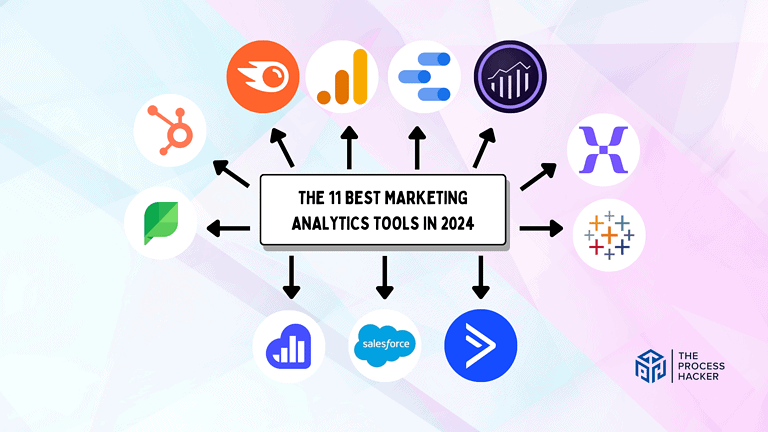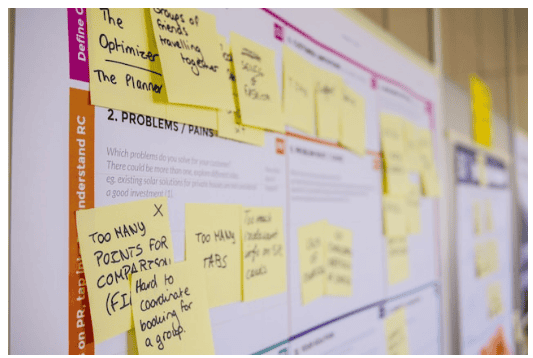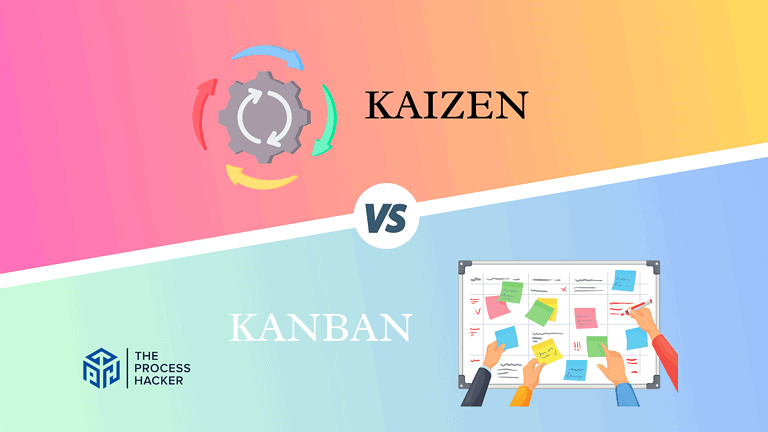How to Hire Employees for Small Business: A Comprehensive Guide
Are you ready to take your small business to the next level? Hiring your first employee is a game-changer, but it can feel like navigating a minefield of paperwork and decisions. Don’t worry – we’ve got your back!
Did you know that 42% of small business owners cite hiring new employees as their biggest challenge? (Source: NFIB) Yikes! But here’s the thing: with the right strategy, you can transform this challenge into an opportunity to skyrocket your business growth.
Imagine having a dream team that shares your passion and helps your business thrive. Exciting, right? Well, buckle up because we’re about to embark on a journey to revolutionize your hiring process and set your small business up for success.
In this guide, we’ll walk you through everything you need to know about hiring employees for your small business. We’ve got you covered from crafting irresistible job descriptions to navigating federal labor laws. By the end of this article, you’ll be armed with the knowledge and confidence to attract top talent and build a team that will take your business to new heights.
What is the Process of Hiring Employees for a Small Business?
Hiring employees for your small business means more than just filling an empty desk. It’s about finding the right individuals with the skills and passion to contribute to your company’s growth.
It involves a series of carefully planned steps, from identifying the need for a new role to onboarding your chosen candidate. Each step is crucial in building a team that shares your vision and drives your business forward.
Why You Should Know How to Hire Employees for Your Small Business
Small business owners often wear many hats, but building a team that can support and expand your vision is crucial as your company grows. Here’s why mastering the hiring process is essential:
- Accelerates business growth and expansion: By bringing on skilled employees, you can increase productivity, expand your offerings, and reach new markets.
- Allows you to focus on strategic tasks while delegating operational work: Free up your time to focus on the big picture while your team handles day-to-day tasks.
- BringBringh perspectives and specialized skills to your business: Tap into a wider pool of talent and expertise to innovate and improve your business.
- Helps create a positive company culture and boost morale: Building a team that feels valued and motivated leads to increased productivity and employee retention.
- Ensures compliance with employment laws and regulations: Avoid legal pitfalls and create a fair and safe working environment for your employees.
When you know how to hire effectively, you’ll position your small business for long-term success and create a foundation for sustainable growth.
How to Hire Employees for Your Small Business: A Step-by-Step Guide
While the prospect of expanding your team can be exciting, it’s crucial to approach the hiring process with a clear strategy. Let’s break down the steps involved in bringing new talent into your small business.
Step 1: Lay the Groundwork
Before you start the hiring process, it’s essential to prepare your business:
- Obtain an Employer Identification Number (EIN) from the IRS: This unique number is crucial for reporting payroll taxes and other documents to the IRS and is required for businesses with employees.
- Register with your state’s labor department. This registration ensures compliance with state employment laws and the ability to handle unemployment insurance and workers’ compensation.
- Set up workers’ compensation insurance: This insurance is mandatory in most states and covers medical costs and a portion of lost wages for any employee who becomes injured or ill on the job.
- Create an employee handbook outlining policies and procedures. This handbook will serve as a reference for your employees and outline your business’s practices, culture, and expectations.
- Establish a payroll system and choose a payroll schedule: Decide how often you will pay your employees (e.g., weekly, biweekly, monthly), and set up a system that facilitates timely and accurate payment.
- Familiarize yourself with federal and state employment laws: Understanding these laws will help you navigate the complexities of employment and ensure that your business remains compliant, avoiding potential legal issues.
Step 2: Craft an Irresistible Job Description
A standout job description isn’t just a list of requirements; it’s your first point of contact with potential candidates.
Start by being precise about the role’s duties and responsibilities. This clarity helps potential applicants understand exactly what you’ll expect from them and whether their skills align with the job.
Candidates seek more than just a job; they want a place to fit in and thrive. Highlight what makes your company a unique and supportive environment. Share your core values and any cultural benefits you offer.
Besides the salary, explain the benefits package, including health insurance, retirement plans, and any other perks. Emphasize opportunities for professional development and career advancement within your company.
Use action verbs to make your job description dynamic and engaging. Phrases like “manage,” “lead,” and “develop” are more compelling than passive descriptions and help paint a picture of the responsibilities involved.
To ensure the right candidates find your job ads, include keywords that are specific to the position. This not only improves the searchability of your posting on job boards but also optimizes it for search engines, increasing the visibility of your ad.
Step 3: Spread the Word
Once you have your compelling job description, the next step is to get it in front of the right eyes.
Utilize Major Job Boards
Platforms like Indeed, LinkedIn, and Glassdoor are the digital highways of the job search world. These sites are frequented by job seekers from all industries and experience levels, giving you access to a diverse pool of candidates. Consider them your go-to resources for casting a wide net.
Leverage Your Network
Your professional network is more than just connections; it’s a potential goldmine of talent. Don’t hesitate to contact peers, mentors, and colleagues to spread the word about your open position. Referrals often lead to some of the most loyal and fitting candidates, as they come with a built-in endorsement from someone you trust.
Industry-Specific Channels
Post your job on industry-specific job sites or forums. This targets professionals who are passionate about and experienced in your specific field, increasing the chances of finding someone who meets your technical requirements and understands the industry landscape.
Social Media Outreach
Think niche when it comes to finding specialized talent. Post your job on industry-specific job sites or forums to connect with professionals passionate about and experienced in your field. This targeted approach increases the likelihood of finding someone who meets your technical requirements and understands your industry’s nuances.
Collaborate with Educational Institutions
Harness the power of your company’s social media presence to share the job opportunity. This taps into your existing followers and allows your network to share and recommend potential candidates easily. It’s a quick and effective way to leverage your social platforms’ reach and engagement.
Step 4: Screen and Select
Finding the best fit among applicants involves a detailed screening process. Here’s how you can efficiently evaluate candidates:
- Resume and Cover Letter Review: Carefully review each application, focusing on relevant skills, experience, and career progression. Look for clear and concise communication and any red flags or inconsistencies.
- Initial Screenings: Conduct brief phone or video calls to gauge a candidate’s communication style, personality, and overall fit for the role. This helps you filter out those who don’t meet basic requirements.
- Targeted Interview Questions: Prepare a list of insightful interview questions tailored to the position. Focus on past experiences, problem-solving skills, and cultural alignment.
- In-depth Interview Process: Schedule in-person or video interviews with promising candidates. Use this opportunity to learn more about their qualifications, assess their passion for the role, and gauge how they’ll mesh with your team.
- Skills Assessments & Trial Projects: For certain positions, consider using skills assessments or trial projects to evaluate a candidate’s capabilities in a real-world context.
- Reference & Background Checks: Always check references to gain insights from previous employers and colleagues. Conduct background checks as necessary to ensure a safe and secure work environment.
The screening and selection process involves finding the right match for your company and the candidate. Taking a methodical approach and utilizing various evaluation tools will increase your chances of making successful hires.
Step 5: Make It Official
Congratulations! You’ve navigated the hiring process and found the ideal candidate to join your team. Now it’s time to make it official and welcome your new hire.
Extend a verbal offer to express your excitement and enthusiasm, then follow up promptly with a formal written offer letter outlining the details of the position, compensation, benefits, and start date.
Next, be prepared to negotiate salary and benefits within reason. Remember, the goal is to find a mutually agreeable arrangement that values both the candidate’s skills and your company’s budget.
Prepare a clear and concise employment contract detailing the employment relationship’s terms and conditions. This protects both you and your new hire.
As soon as the contract is signed, ensure all necessary new hire paperwork is completed accurately and efficiently. This typically includes Form I-9 for verifying employment eligibility, Form W-4 for tax withholding, and any relevant state tax forms.
Finally, agree on a start date that works for the company and the candidate. Communicate the next steps, such as onboarding schedules and what they should expect on their first day. This information helps to ease the transition and sets the stage for a successful start.
Step 6: Welcome Aboard
The hiring process doesn’t end with a signed contract. First impressions matter, and a well-structured onboarding experience sets the tone for a positive and productive working relationship.
Create a positive onboarding experience for your new employee:
- Workspace Preparation: Ensure your new hire’s workspace is ready and equipped with the necessary tools and equipment they’ll need to succeed. A welcoming and organized environment shows you care and are invested in their success.
- Onboarding Plan: Develop a comprehensive onboarding plan that outlines the employee’s first few weeks or months on the job. This plan should include key introductions, training sessions, and milestones to track their progress.
- Team Introductions: Facilitate introductions to team members and key stakeholders. Help your new hire build relationships and feel connected to the company culture.
- Training & Systems: Provide thorough training on company systems, processes, and any relevant software. Ensure they can access all the resources needed to perform their role effectively.
- Expectations & Goals: Clearly communicate expectations and set achievable goals for the first few months. This will help them understand their responsibilities and provide a sense of direction.
- Regular Check-ins: Schedule regular check-ins to offer support, answer questions, and address concerns. This shows you’re committed to their success and helps ensure a smooth transition into their new role.
A positive onboarding experience sets the stage for long-term employee engagement and productivity. Invest the time and effort to welcome your new hires and make them feel like a valued team member.
Key Considerations for Successfully Hiring Employees for Your Small Business
As you navigate the hiring process, keeping some important factors in mind is crucial. These considerations will help ensure a smooth and successful hiring experience that sets the stage for long-term employee engagement and productivity.
Compliance is Key
While hiring new talent is exciting, operating within the legal framework is critical. Staying compliant with employment laws safeguards both your business and your employees.
Familiarize yourself with key federal labor laws, such as the Fair Labor Standards Act (FLSA), Family and Medical Leave Act (FMLA), and Americans with Disabilities Act (ADA). These regulations cover minimum wage, overtime pay, leave policies, and workplace accommodations.
Remember state and local employment laws, which can sometimes be even more stringent than federal regulations. These might include additional employee protections, like meal and rest break requirements or paid sick leave mandates.
Maintaining meticulous employee information records, hours worked, and payroll details is also vital. This ensures you’re prepared for audits and helps you comply with tax and labor regulations.
Furthermore, it’s essential to understand the key differences between employees and independent contractors. Misclassifying workers can lead to hefty fines and penalties, so clarify these distinctions.
Build a Strong Company Culture
Your employees are the heart of your business, and a positive company culture can make all the difference in attracting and retaining top talent.
Communicating your company’s mission and values is essential for creating a sense of purpose and shared goals. When employees understand the “why” behind their work, they’re more likely to be engaged and motivated.
Foster a positive work environment that encourages collaboration, open communication, and mutual respect. A supportive and inclusive atmosphere boosts morale and fosters a sense of belonging.
Offering competitive benefits and perks is another key factor in attracting and retaining top talent. Think beyond salary and consider offering health insurance, paid time off, flexible work arrangements, or professional development opportunities.
Investing in your employee’s development is crucial for creating a thriving workplace. Provide opportunities for training, mentorship programs, or tuition reimbursement to help them expand their skills and advance their careers.
Finally, remember to recognize and reward employee contributions regularly. Whether it’s a simple thank-you note, a public acknowledgment, or a bonus, showing appreciation for your team’s hard work goes a long way toward building a positive and engaged workforce.
Embrace Technology
In today’s digital age, leveraging technology can significantly streamline your hiring and management processes, saving you time and resources while improving overall efficiency.
Applicant tracking systems (ATS) are valuable for organizing candidate information, tracking their progress through the hiring pipeline, and automating communication. This frees up valuable time for you to focus on other critical tasks. Implementing HR software can also simplify various aspects of employee management, such as onboarding, time tracking, payroll, and performance reviews.
Collaboration tools like project management platforms and instant messaging apps can enhance team communication, facilitate information sharing, and promote a more connected and productive workforce.
Additionally, benefits administration software should be considered to simplify enrollment and employee benefits management. This streamlines the process for you and your employees, ensuring everyone has access to the information and resources they need.
Embracing technology improves efficiency and enhances the employee experience. You can create a more streamlined and engaging work environment by automating routine tasks and providing easy access to essential information.
Plan for the Future
Developing a talent pipeline by proactively identifying and nurturing potential candidates ensures you have a pool of qualified individuals ready to step into key roles as your company expands. Creating clear career paths and succession plans for key roles also helps retain top talent and provides employees with direction and opportunities for advancement.
Regularly assessing your team’s skills and identifying areas for improvement enables you to proactively address any skill gaps through targeted training or strategic hiring. Finally, remember that your business is constantly evolving, so stay flexible and adapt your hiring strategy to meet the changing demands of your industry and the market.
By adopting a long-term perspective on hiring, you’ll build a strong and resilient team capable of supporting your company’s growth and success for years to come.
Taking it to the Next Level: How to Build a High-Performing Team
Once you’ve mastered the basics of hiring, it’s time to focus on cultivating a high-performing team that will propel your business to new heights.
Once you’ve mastered the basics of hiring, focus on creating a dream team:
1) Ongoing Training and Development
Investing in your employees’ growth through continuous learning opportunities fosters professional development and demonstrates your commitment to their success. Offer workshops, seminars, online courses, or mentorship programs that align with their career aspirations and the company’s needs.
This empowers them to expand their skill sets, stay ahead of industry trends, and contribute more value to your organization.
2) Cross-Functional Collaboration
Encourage teamwork and knowledge sharing across different departments to break down silos and foster a sense of unity. Organize cross-functional projects, team-building activities, and knowledge-sharing sessions to facilitate communication and collaboration.
This approach sparks innovation and helps everyone understand the interconnectedness of their roles and the company’s overall goals.
3) Culture of Innovation
Create an environment where employees feel safe to experiment, take risks, and challenge the status quo. Encourage them to share new ideas, brainstorm solutions, and test innovative approaches.
Celebrate successes and learn from failures, fostering a mindset of continuous improvement and adaptability.
4) Employee Feedback
Regularly solicit feedback from your team members through surveys, one-on-one meetings, or suggestion boxes. Actively listen to their perspectives, concerns, and ideas.
Implementing changes based on their feedback demonstrates that you value their opinions and are committed to creating a positive and supportive work environment.
5) Flexible Work Arrangements
Embrace the benefits of flexible work options, such as remote work or flexible hours, to attract and retain a diverse and talented workforce. This approach caters to different work styles and personal needs, improving work-life balance, increasing employee satisfaction, and enhancing productivity.
By incorporating these strategies into your approach, you’ll create a high-performing, engaged, motivated, and driven team to achieve remarkable results. Building a dream team requires ongoing effort and dedication, but the rewards are immeasurable for your employees and your business.
Alternatives to Traditional Hiring for Small Businesses
While building a full-time team is often the goal, it’s essential to recognize that alternative hiring strategies can also be precious for small businesses. These options offer flexibility, cost savings, and access to a wider talent pool, allowing you to adapt your workforce to your evolving needs.
Freelancers & Independent Contractors
Freelancers and independent contractors can provide the perfect solution when you need specialized skills for a specific project or have temporary workload spikes. They bring expertise and flexibility to your team without the long-term commitment and overhead costs of full-time employees. You can tap into their skills as needed, scaling your workforce up or down depending on project demands.
Part-Time & Seasonal Employees
If your business experiences predictable fluctuations in workload throughout the year, consider hiring part-time or seasonal employees to manage these peaks and valleys. This allows you to maintain optimal staffing levels without overextending your budget or overworking your core team.
Internship Programs
Internships offer a win-win scenario for both your business and aspiring professionals. You gain access to fresh talent and new perspectives, while interns gain valuable hands-on experience and mentorship. Internships can serve as a pipeline for future full-time hires, allowing you to evaluate potential candidates in a real-world setting.
Employee Leasing & PEOs
If handling HR tasks like payroll, benefits administration, and compliance feels overwhelming, consider partnering with an employee leasing company or professional employer organization (PEO). These organizations can take on these responsibilities, freeing up your time to focus on core business activities. Plus, you may gain access to a wider range of benefits and HR expertise than you could manage independently.
Virtual Assistants & Remote Workers
Embrace the flexibility of remote work and expand your talent pool by hiring virtual assistants or remote workers. This opens up opportunities to access skilled professionals from around the globe, often at a lower cost. It also allows you to build a more geographically diverse team and tap into a broader range of perspectives and experiences.
Remember, there’s no one-size-fits-all approach to hiring. You can build a dynamic and adaptable workforce that supports your business goals by considering these alternative strategies and tailoring them to your specific needs.
The key to successful hiring is balancing your business needs, budget, and long-term goals.
Final Thoughts on Hiring Qualified Candidates
Hiring the right people is undeniably one of the most critical aspects of building a successful small business. While the process may seem daunting, with careful planning and a strategic approach, you can find and attract the top talent your company needs to thrive.
Remember, the hiring landscape constantly evolves, so stay informed about the latest trends and best practices. Embrace technology to streamline your processes, but never underestimate the importance of the human touch in building meaningful connections with potential candidates.
Above all, focus on creating a positive and supportive work environment where employees feel valued, empowered, and inspired to contribute their best. Investing in your team’s growth and fostering a culture of collaboration and innovation will set the stage for long-term success and sustainable growth.
Hiring is an ongoing journey, not a destination. By continuously refining your hiring strategy and adapting to your business’s changing needs, you’ll ensure that your team remains a powerful asset, driving your company forward and achieving its full potential.







